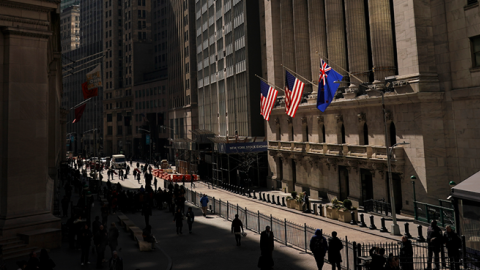While America was watching last month’s hearings on infrastructure, China slipped in and made off with a good bit of last year’s stocking stuffers – big stock gains on Wall Street. Quietly, the MSCI Emerging Markets Index upped its weighting in China’s A shares, going from 5 percent to 20 percent by 2019. Which means that, “on completion of this three-step implementation, there will be 253 Large and 168 Mid Cap China A shares, including 27 ChiNext shares, in the MSCI Emerging Markets Index.” Afterwards “China A-Shares are predicted to account for about 16% of the MSCI Emerging Market (EM) Index4 which is tracked by $1.8 trillion in assets.”
Savvy investors have probably been tracking the Shanghai Exchange, which has outperformed U.S. equity markets since the MSCI announcement that it plans to add evermore Chinese A shares. To date the Shanghai Composite is up over 20 percent in 2019 They probably also know that in 2015 the Chinese government intervened in the market in ways that would be completely out of character for a market-based economy like the United States. The 2015 plunge in Chinese equity markets prompted the Chinese government to step in and prop up the markets to the tune of over 1.3 trillion renminbi
Unfortunately, it’s the not-so-savvy investors that may be now paying the price for the simple forgetfulness of today’s auto-pilot index investing. Many institutional investors (Wall Street-speak for our retirement funds) simply follow the indexes to figure out where to place your money to earn the returns that will fund your retirement.
When coupled with the 364 USD-denominated onshore Chinese bonds that will be added to the Bloomberg Barclays Global Aggregate Index, American workers will fund China’s economy to the tune of almost 230 Billion USD over the next 20 months as their fund managers seek to build on their nest-egg by buying Chinese financial instruments American’s hard-earned retirement funds are going to what the Trump administration has called America’s most potent strategic competitor. American workers might be okay with that, so long as they know their money is safe. But read what SEC Chairman Jay Clayton said in December about companies with significant operations in China
It states, “we note that a refusal to cooperate, either in an inspection or an investigation, could subject the firm to SEC or PCAOB sanctions and remedial measures.”
One of the most significant current issues relates to the ability of the U.S.-based Public Company Accounting Oversight Board to inspect the audit work and practices of auditing firms in China that are registered with the Board.
Suspect auditing of listed companies isn’t the only problem. Since the movement of money in China’s economy is opaque, you cannot be sure what the money is being used for. That means loans going to fund the Belt and Road Initiative could be indirectly coming from American pensions.
It gets worse. Soon after China announced the building of its new aircraft carrier the builder, China Shipbuilding Industry Corporation, announced a 1 billion-dollar USD-denominated bond offering in Frankfurt, Germany. These are bonds that get purchased by institutional investors who seem to have an insatiable appetite for Chinese financial instruments.
In essence, American’s retirement funds could be underwriting the very activity that the U.S. government is trying to discourage. The best example of this are the illegal islands in the South China Sea. They were largely built by dredging units from the China Communication Construction Company Who owns shares in that you ask? None other than CalPERS, the California Public Employee’s Retirement Fund. That means the Defense Department is sending ships to sail within 12 nautical miles of illegal islands that the American people, in part, paid for. Surprised? You shouldn’t be. Such is the state of international finance in a globalized world.
What should we do? Clearly, we need to do far more to scrutinize investments going to China. The PRC has over 30 trillion dollars in debt, and that figure is growing. Next year, China’s projected growth rate is 6.2 percent, but that is being accomplished with 6.3 percent of fixed-asset investment That means that without the money pouring into China from American retirement accounts China’s economy would probably be shrinking, because it needs those dollars to buy raw materials
Instead of spending money in China, we should be investing in the U.S. economy. One way to accomplish this would be to form a private Infrastructure Bank for America. Modelled on the Federal Home Loan Bank System, the Infrastructure Bank could sell American Infrastructure bonds that the retirement funds could buy. The Infrastructure Bank could then lend to the 35 State Infrastructure Banks, almost all of which have no money. By bundling state projects together the bank could also ensure projects worked synergistically to magnify the regional and national economic impact.
This would accomplish two things. First, it would curtail the flow of money into China and prevent possible future investor losses as China’s economy slows. Second, it would inject much-needed cash into American infrastructure and industrial base. This would help grow the U.S. economy, and make China’s goal of undermining democracies everywhere that much harder. Since the bank would be private, like the FHLB system, it would do so without adding to the U.S. national debt.















